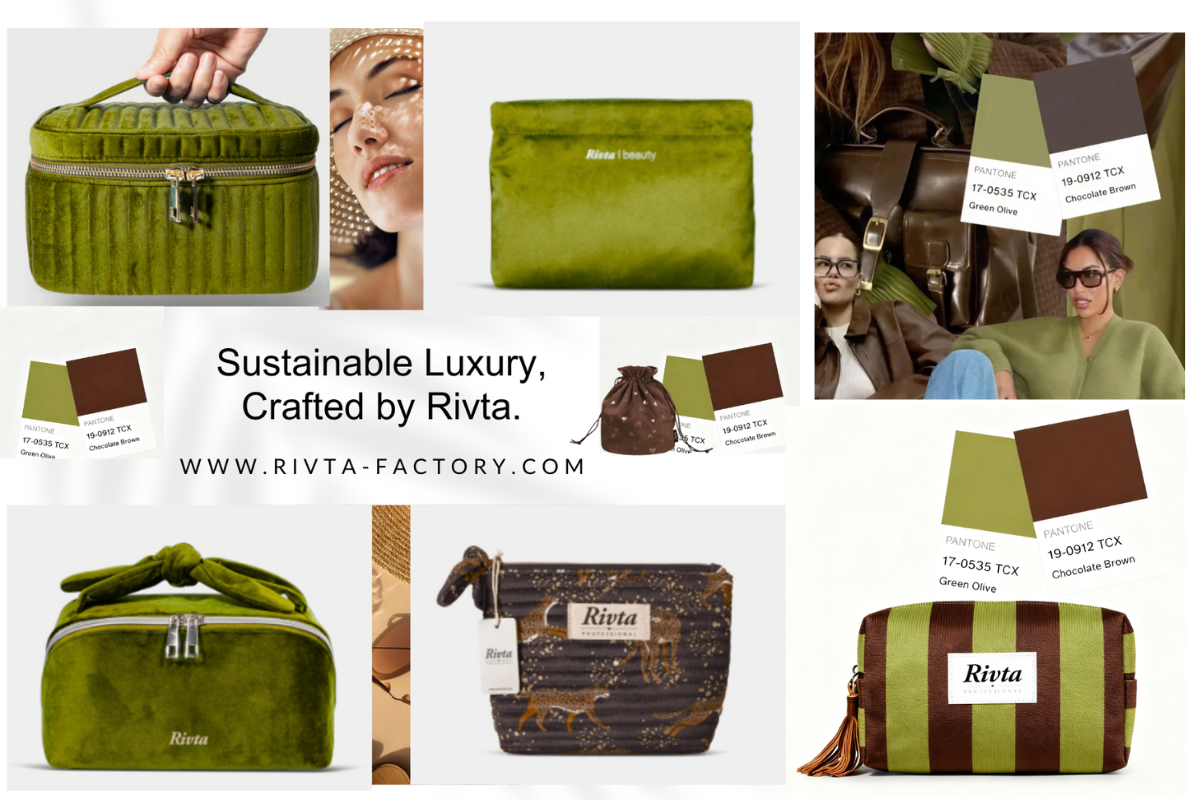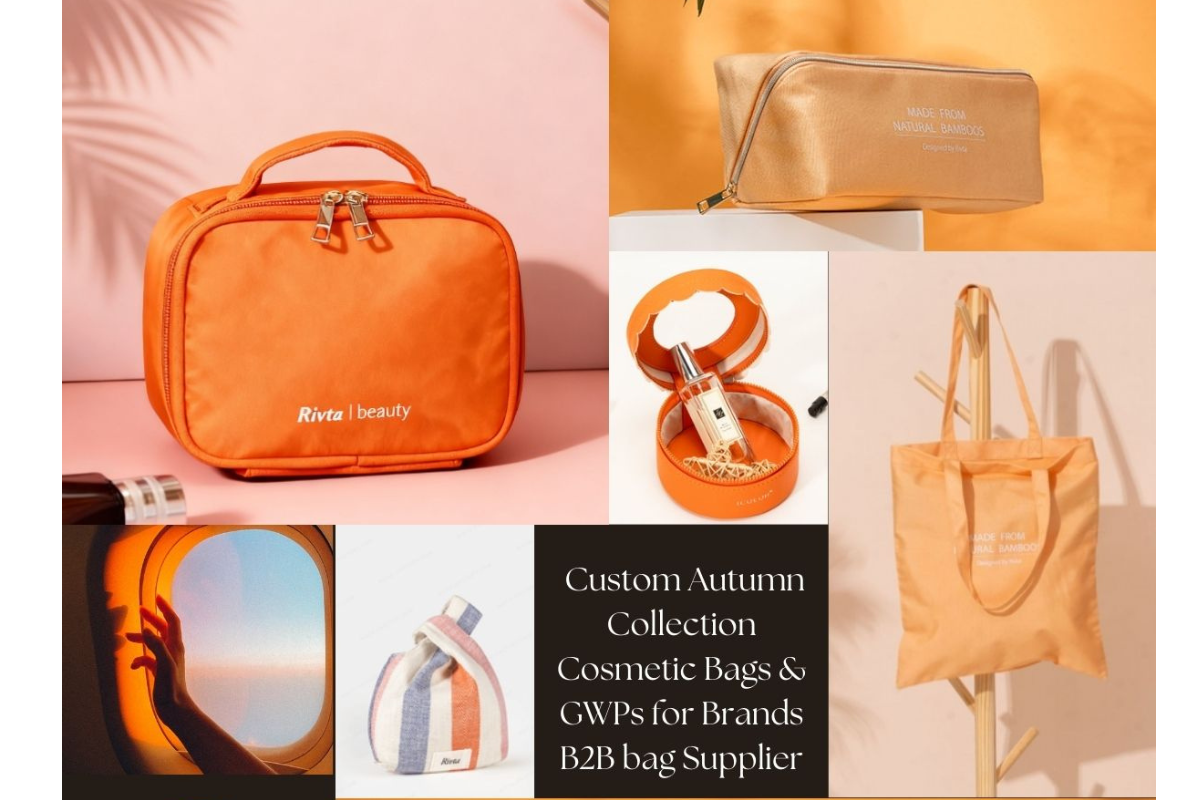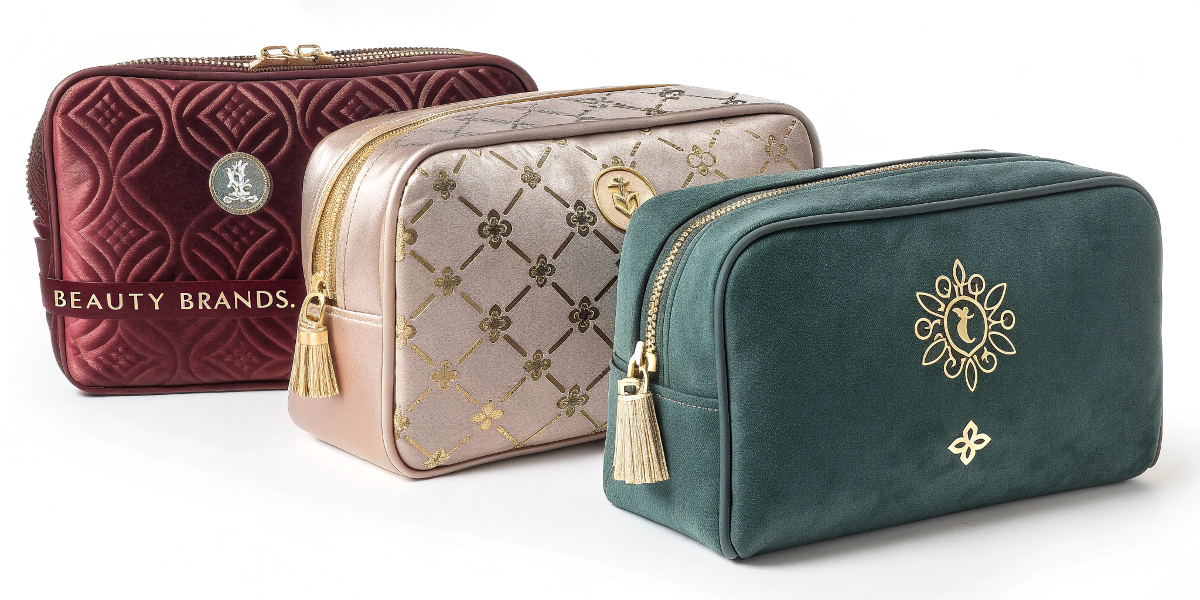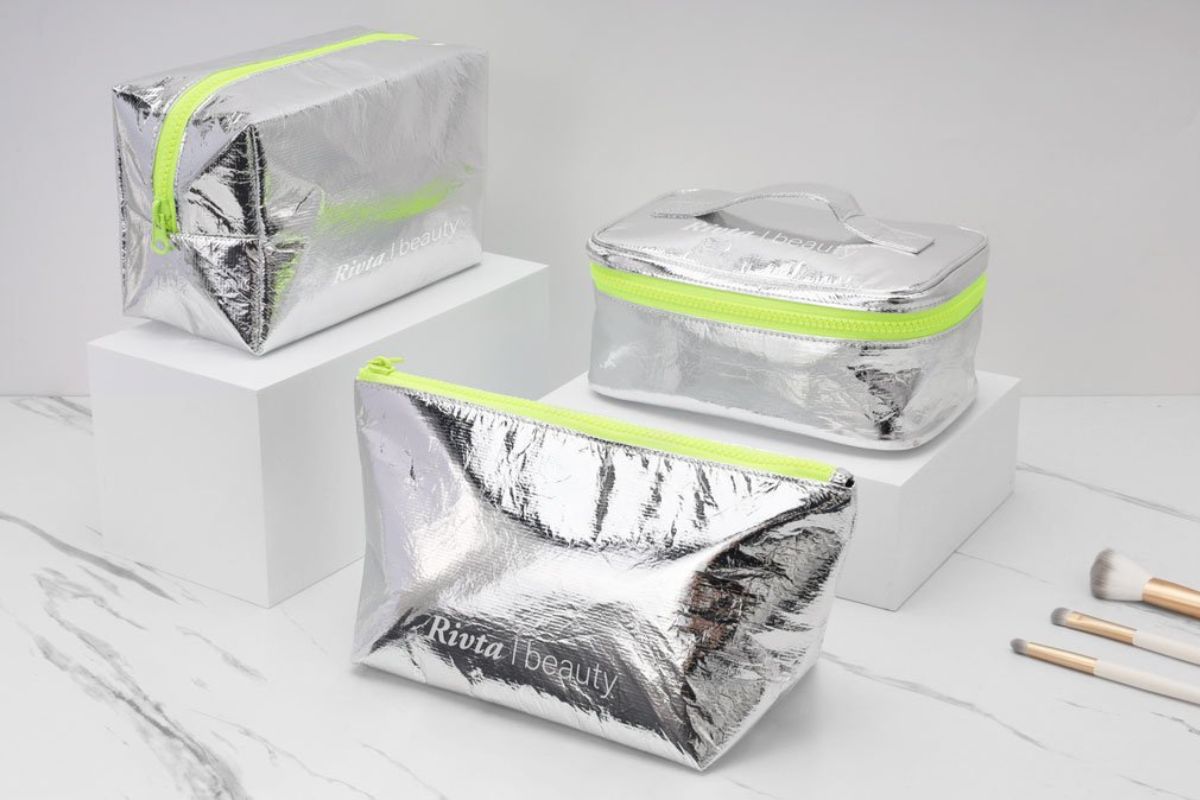Why Are 100% Natural Fiber Cosmetic Bags Revolutionizing Sustainable Beauty Packaging?
In today's eco-conscious market, beauty brands are increasingly seeking sustainable alternatives for their packaging and accessories. Natural fiber cosmetic bags represent a significant shift away from synthetic materials, offering both environmental benefits and premium appeal. This comprehensive guide explores why these products are becoming essential in the B2B beauty sector.
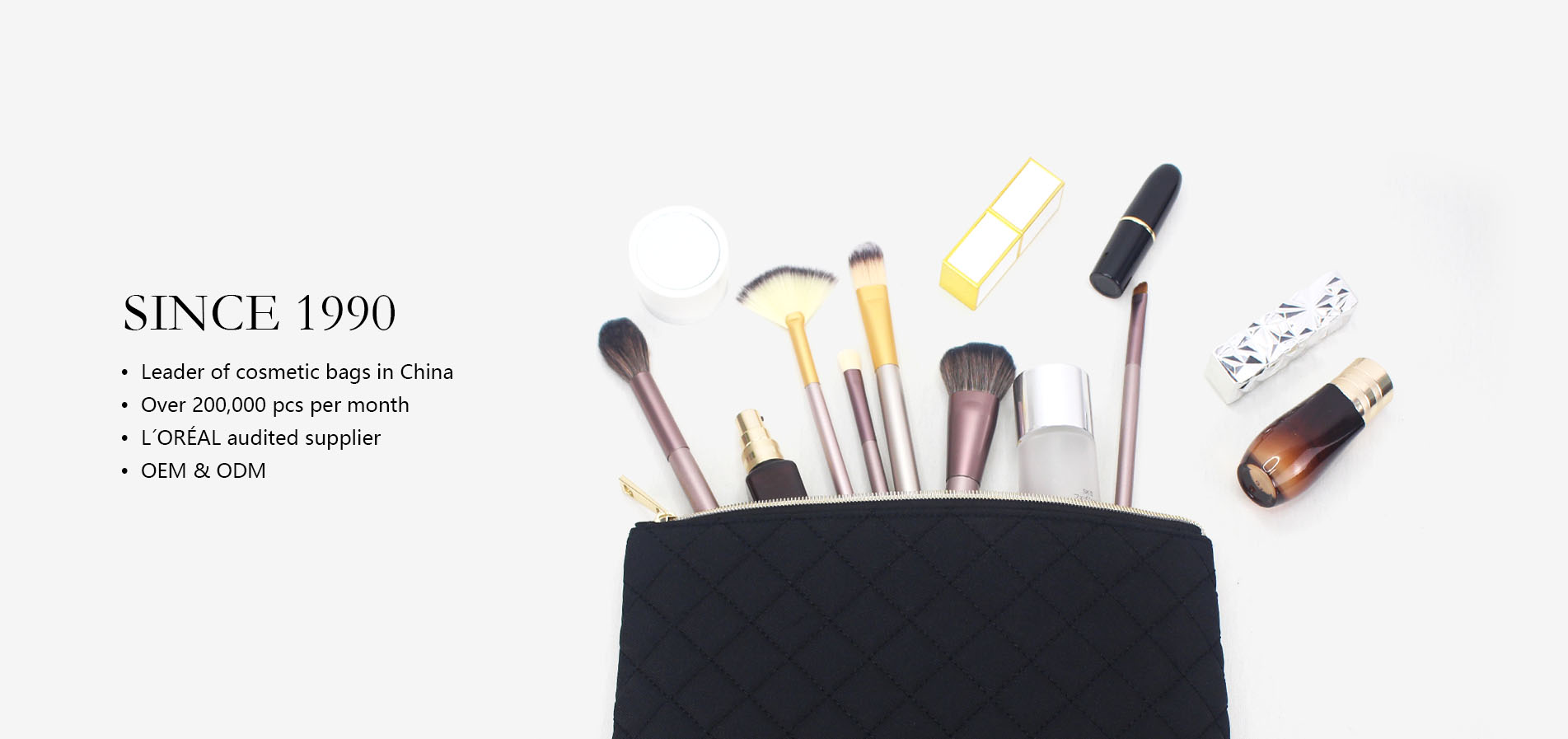
The Rise of Natural Fiber Cosmetic Bags in the Beauty Industry
The beauty industry generates over 120 billion packaging units annually, with a significant portion ending up in landfills or oceans. This sobering reality has sparked a revolution in how brands approach their packaging solutions. Sustainable beauty packaging has evolved from a niche concern to a mainstream necessity, with natural fiber cosmetic bags emerging as a frontrunner in this transformation.
The journey from plastic dominance to natural alternatives reflects a broader shift in consumer values and corporate responsibility. What began as small-scale experimentation has blossomed into a robust market segment, with annual growth rates exceeding 14% since 2020[1]. This growth isn't merely a response to environmental concerns but represents a strategic pivot as brands recognize the marketing and ethical advantages of sustainable accessories.
In my experience working with beauty brands across various markets, I've witnessed firsthand how natural fiber packaging solutions can elevate a product line while simultaneously reducing environmental impact. The tactile quality and visual appeal of these materials create an unboxing experience that synthetic alternatives simply cannot match.
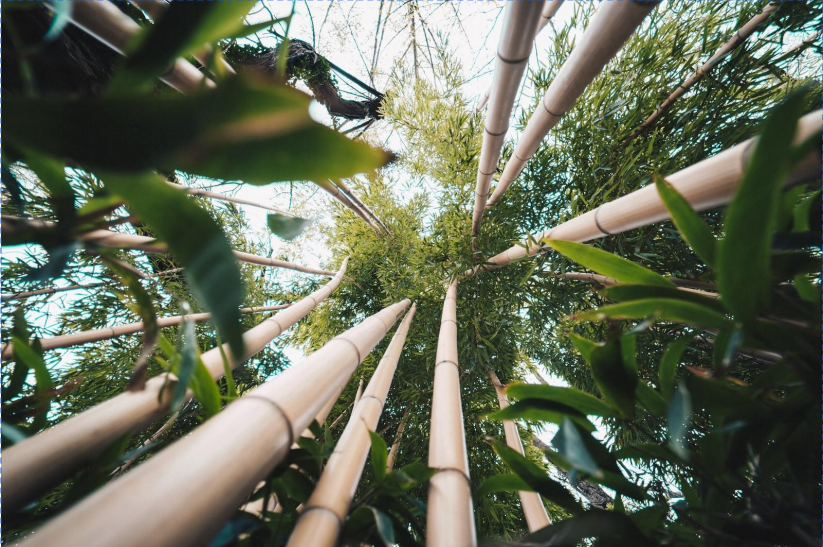
Comparing Natural Fiber Options: Bamboo, Cotton, Hemp, and Beyond
When considering natural fiber alternatives for cosmetic bags, brands have several compelling options, each with distinct characteristics and sustainability profiles. Understanding these differences is crucial for making informed sourcing decisions that align with both brand values and practical requirements.
| Fiber Type | Sustainability | Durability | Cost | Special Properties |
|---|---|---|---|---|
| Bamboo | ★★★★★ | ★★★★ | ★★★ | Antibacterial, fast-growing, biodegradable |
| Cotton | ★★★ | ★★★★★ | ★★ | Soft, washable, widely available |
| Hemp | ★★★★ | ★★★★★ | ★★★ | Strong, pest-resistant, minimal water use |
| Jute | ★★★★ | ★★★ | ★ | Rough texture, very eco-friendly, biodegradable |
The biodegradability factor varies significantly among these materials. Research from the Textile Exchange shows that bamboo fiber can decompose completely within 2-3 years in proper conditions, compared to synthetic materials that may persist for centuries[2]. This rapid decomposition cycle makes bamboo particularly attractive for brands committed to full-lifecycle sustainability.
When selecting materials for cosmetic bags, it's essential to consider not just the environmental credentials but also the practical requirements of beauty product storage. Moisture resistance, durability, and texture all play crucial roles in determining which natural fiber best suits specific applications.
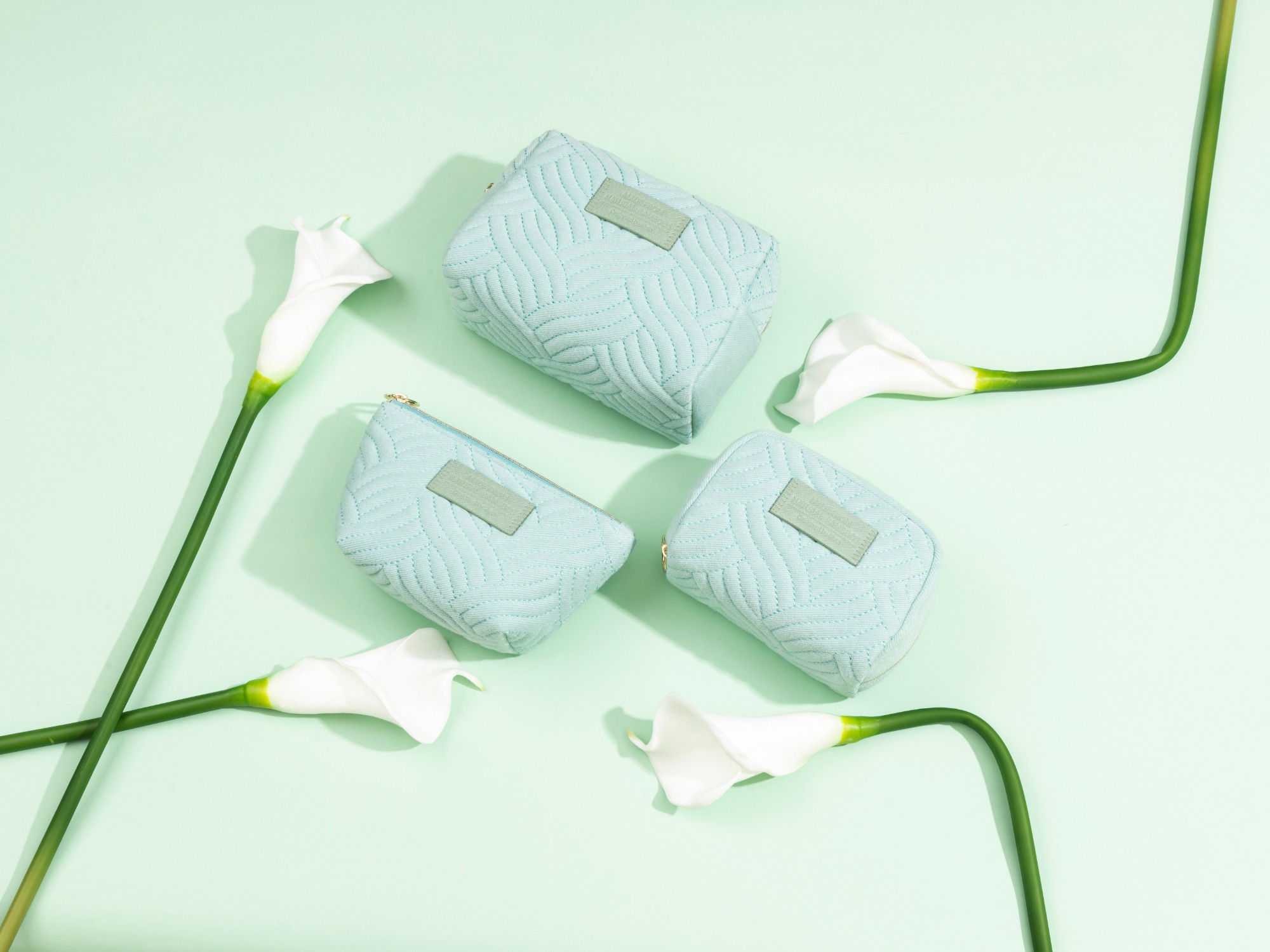
Bamboo Fiber: The Premium Choice for Sustainable Cosmetic Bags
Among the various natural materials available, bamboo fiber stands out as an exceptional option for cosmetic bags due to its remarkable combination of sustainability and functionality. The bamboo fiber benefits extend beyond basic environmental considerations to offer tangible advantages for both brands and end-users.
Bamboo grows at an astonishing rate—up to 91 cm per day for some species—making it one of the most renewable resources on the planet. Unlike cotton, which requires replanting after harvest, bamboo regenerates from its own roots, eliminating the need for resource-intensive replanting. This rapid growth cycle translates to significantly lower land use requirements compared to other natural fibers.
From a product perspective, bamboo fiber offers natural antibacterial properties that make it ideal for storing beauty products. Studies have shown that bamboo kun, an antimicrobial bio-agent found naturally in bamboo, can eliminate over 70% of bacteria that attempt to grow on the fiber[3]. For cosmetic storage, this natural protection helps maintain product integrity and hygiene without chemical treatments.
The manufacturing process for bamboo fiber has evolved significantly in recent years, with eco-friendly mechanical processing methods replacing chemical-intensive approaches. The resulting material offers a silky texture with excellent moisture-wicking properties, creating a protective environment for cosmetics while maintaining breathability.
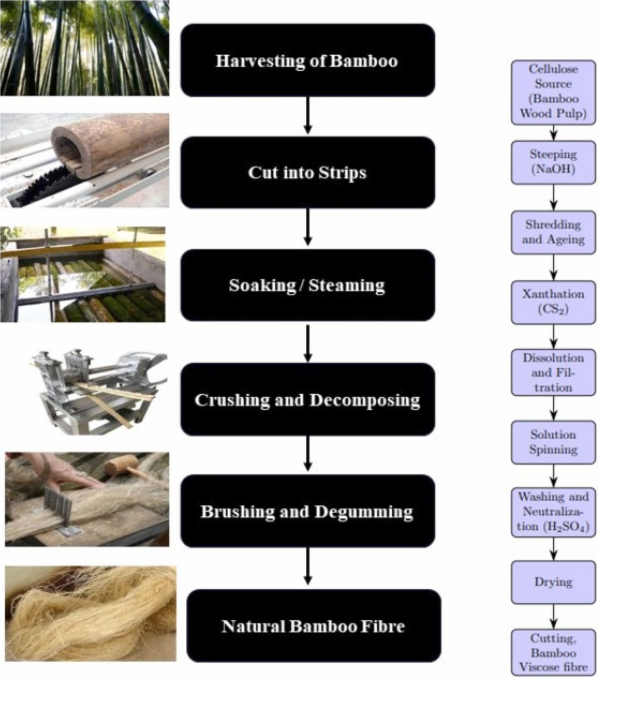
Sustainability Credentials: Certifications and Standards
In the increasingly complex landscape of sustainable materials, eco-certification standards provide crucial verification that products meet specific environmental and ethical criteria. For B2B buyers, these certifications offer assurance that their sourcing decisions align with stated sustainability goals.
Key certifications to look for when sourcing natural fiber cosmetic bags include:
- Global Organic Textile Standard (GOTS): Verifies that textiles contain a minimum of 70% organic natural fibers and meet environmental and social criteria across production, packaging, labeling, and distribution[4].
- OEKO-TEX Standard 100: Certifies that textiles are free from harmful substances, ensuring product safety for consumers.
- Forest Stewardship Council (FSC): For bamboo products, this certification confirms responsible forest management practices.
- Cradle to Cradle: Evaluates products across five sustainability categories: material health, material reuse, renewable energy use, water stewardship, and social fairness.
Beyond formal certifications, transparent supply chain documentation has become increasingly important. Leading manufacturers now provide detailed information about material sourcing, processing methods, and labor practices. This transparency allows brands to make fully informed decisions and substantiate their sustainability claims to increasingly skeptical consumers.
When evaluating potential suppliers, I recommend requesting comprehensive documentation of all sustainability credentials. The most reputable manufacturers will readily provide this information, often showcasing their certifications prominently in their marketing materials and product specifications.

Customization Options for B2B Buyers
For beauty brands seeking to create distinctive packaging experiences, custom sustainable packaging offers numerous opportunities for differentiation while maintaining environmental commitments. The customization possibilities for natural fiber cosmetic bags have expanded significantly in recent years, with techniques that complement rather than compromise the materials' sustainable qualities.
Available customization options typically include:
- Hot stamping: Creates elegant metallic impressions without plastic-based foils
- Screen printing: Offers vibrant, durable designs using water-based inks
- Embroidery: Provides textural dimension with natural thread options
- Laser engraving: Delivers precise detailing without additional materials
-
Natural dyes: Allows for color customization using plant-based pigments
Case studies of successful customization projects demonstrate that thoughtful branding on natural materials can actually enhance perceived value. A 2023 market analysis found that beauty products featuring branded sustainable accessories commanded price premiums averaging 28% higher than comparable products with generic packaging[5].
Minimum order quantities (MOQs) for customized natural fiber bags typically range from 500-1,000 units, making them accessible to mid-sized brands as well as major players. This accessibility has democratized sustainable packaging options across the beauty industry, allowing emerging brands to compete on sustainability credentials alongside established companies.
Case Studies: Successful Brand Implementations
Examining real-world applications provides valuable Understanding into how natural fiber cosmetic bags can be effectively integrated into brand strategies. These sustainable brand packaging success stories demonstrate both the practical implementation and tangible business benefits.
Luxury Case Study: Aurelia Probiotic Skincare
This premium skincare brand transitioned to bamboo fiber bags for their gift sets and product bundles in 2022. The shift aligned with their clean beauty positioning while enhancing the tactile luxury of their unboxing experience. Key outcomes included:
- 32% increase in positive social media mentions related to packaging
- 18% reduction in packaging-related carbon footprint
- Strengthened retailer relationships, particularly with sustainability-focused partners like Credo Beauty and Selfridges[6]
Mass Market Case Study: Eco Warrior
This accessible personal care brand implemented hemp cosmetic bags as part of their complete plastic-free strategy. Their approach focused on educating consumers about the sustainability benefits while maintaining competitive pricing. Results included:
- 45% year-over-year sales growth following implementation
- Expanded retail distribution, gaining entry to previously inaccessible eco-focused retailers
- Significant earned media coverage, equivalent to an estimated $1.2M in advertising value
These examples illustrate how natural fiber packaging solutions can deliver tangible business benefits across different market segments. The key success factor in both cases was authentic integration with overall brand values rather than treating sustainable packaging as an isolated initiative.
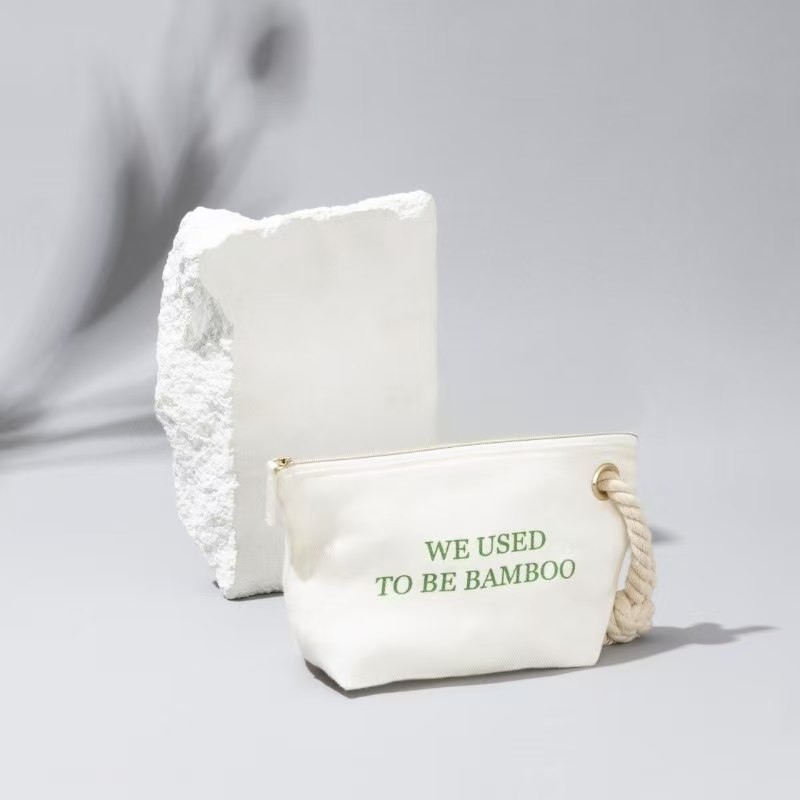
Meeting Consumer Expectations: The End-User Perspective
Understanding the mindset of eco-conscious consumers provides crucial context for B2B decision-making around sustainable packaging. Today's beauty consumers increasingly view their purchasing choices as expressions of personal values, with packaging playing a significant role in those decisions.
Recent consumer research reveals that 73% of beauty shoppers consider sustainable packaging important in their purchasing decisions, with 39% willing to pay a premium for products with environmentally responsible packaging[7]. This willingness to pay more is particularly pronounced among millennial and Gen Z consumers, who will represent 70% of the beauty market by 2025.
Consider the perspective of consumers like Emma from Tasmania, who created Scribble Mat™ based on principles of reusability and waste reduction. For such environmentally conscious entrepreneurs, the packaging choices of the brands they purchase reflect directly on their own values and brand identity. Natural fiber cosmetic bags align perfectly with their preference for simple, waste-free practices and gender-neutral design aesthetics.
The social media impact of sustainable packaging should not be underestimated. Unboxing content featuring distinctive, eco-friendly packaging generates 2.4 times more engagement than content featuring conventional packaging, according to social media analytics. This organic amplification represents valuable earned media for brands making authentic sustainability commitments.
Practical Considerations for B2B Sourcing
For sourcing managers and brand owners evaluating natural fiber options, several practical factors should inform the development of a sustainable sourcing strategy. These considerations ensure that environmental benefits don't come at the expense of product functionality or business viability.
Quality evaluation for natural fiber bags should assess:
- Seam strength: Testing should include repeated stress under weighted conditions
- Colorfastness: Particularly important for dyed natural fibers
- Moisture resistance: Essential for protecting cosmetic products
- Closure reliability: Zipper or drawstring functionality after repeated use
- Dimensional stability: Consistency across production batches
Supply chain considerations have become increasingly complex in recent years. Working with manufacturers who maintain robust contingency planning and diversified material sourcing can mitigate risks of disruption. The World Wildlife Fund's guidelines for sustainable material sourcing provide a comprehensive framework for evaluating supply chain resilience alongside environmental credentials[8].
Cost factors for natural fiber bags typically include:
- Material premiums: Generally 15-30% higher than synthetic alternatives
- Customization costs: Vary significantly based on technique and complexity
- Certification expenses: Often incorporated into base pricing
- Shipping considerations: Natural fibers may weigh more than synthetic alternatives
When calculating ROI, it's important to consider both tangible and intangible benefits, including enhanced brand perception, increased customer loyalty, and potential for earned media coverage. A holistic assessment typically reveals that the business case for natural fiber packaging extends well beyond simple unit cost comparisons.
Future Trends: Innovations in Natural Fiber Technology
The landscape of innovative sustainable materials continues to evolve rapidly, with several emerging developments poised to further enhance the performance and sustainability of natural fiber cosmetic bags in the coming years.
Biotechnology advancements are enabling the development of enhanced natural fibers with improved performance characteristics. These include:
- Enzyme-modified bamboo fibers: With increased softness and flexibility
- Naturally water-resistant hemp varieties: Developed through selective breeding
- Composite materials: Combining different natural fibers for optimized performance
- Bio-based waterproofing treatments: Derived from plant waxes and resins
Processing innovations are simultaneously reducing the environmental footprint of natural fiber production. Closed-loop systems that recapture and reuse water and processing agents have decreased water consumption by up to 80% in advanced facilities. Similarly, energy requirements have been reduced through mechanical processing improvements and renewable energy integration.
Industry experts predict that by 2027, we'll see the mainstream adoption of completely traceable natural fibers with blockchain-verified supply chains, allowing end-to-end sustainability verification[9]. This transparency will further strengthen the market position of truly sustainable options while eliminating greenwashing opportunities.
For forward-thinking beauty brands, these innovations present opportunities to maintain leadership in sustainable practices while addressing practical challenges associated with first-generation natural fiber solutions. Early adoption of these enhanced materials can provide meaningful differentiation in an increasingly competitive sustainable beauty landscape.
Making the Transition: Steps to Incorporate Natural Fiber Bags
Implementing a sustainable packaging transition requires thoughtful planning and execution. Based on successful case studies and best practices, the following roadmap provides a structured approach for beauty brands looking to incorporate natural fiber cosmetic bags into their packaging strategy.
Phase 1: Assessment and Strategy Development (1-2 months)
- Audit current packaging materials and identify replacement opportunities
- Define sustainability goals and success metrics
- Evaluate budget implications and establish ROI expectations
- Identify potential suppliers and request samples
Phase 2: Testing and Refinement (2-3 months)
- Conduct material testing under real-world conditions
- Develop and test customization approaches
- Gather feedback from key stakeholders
- Finalize specifications and customization details
Phase 3: Implementation and Launch (3-4 months)
- Develop transition timeline with supplier
- Create marketing assets highlighting sustainability benefits
- Train customer-facing teams on sustainability messaging
- Phase introduction based on inventory management considerations
Phase 4: Measurement and Optimization (Ongoing)
- Track environmental impact reductions
- Gather customer feedback
- Monitor quality consistency
- Explore additional sustainable packaging opportunities
The Ellen MacArthur Foundation's circular economy implementation tools provide valuable frameworks for measuring and communicating the environmental benefits of packaging transitions[10]. These resources can help brands quantify improvements in terms that resonate with both internal stakeholders and consumers.
Throughout this process, maintaining transparent communication with customers about the transition helps build appreciation for the initiative and manages expectations regarding any aesthetic or functional changes. The most successful transitions frame these changes as improvements rather than compromises, emphasizing the enhanced experience of natural materials.
Conclusion: Leading the Sustainable Beauty Revolution
The shift toward 100% natural fiber cosmetic bags represents more than just a packaging change—it signals a fundamental evolution in how beauty brands approach their environmental responsibilities and customer relationships. As we've explored throughout this article, these materials offer compelling benefits across multiple dimensions, from environmental impact to customer experience and brand differentiation.
For beauty brands navigating today's complex market landscape, natural fiber packaging provides an opportunity to align actions with values while creating distinctive customer experiences. The tactile quality of bamboo, cotton, hemp, and other natural materials creates moments of authentic connection that synthetic alternatives simply cannot replicate.
In my years working with beauty brands on sustainability initiatives, I've consistently observed that packaging transitions often catalyze broader organizational changes. What begins as a focused effort to improve one aspect of environmental performance frequently evolves into more comprehensive sustainability commitments as teams experience the business benefits and positive feedback.
I encourage B2B decision-makers to view natural fiber cosmetic bags not merely as packaging components but as tangible expressions of brand values and commitments. In a market where authenticity is increasingly valued, these materials offer a rare opportunity to deliver sustainability benefits that customers can literally feel in their hands.
For consultation on incorporating natural fiber cosmetic bags into your beauty brand's packaging strategy, contact our team at Rivta. We specialize in custom sustainable packaging solutions tailored to your specific brand requirements and sustainability goals. Reach us directly via WhatsApp at +8615986766579 to discuss your project needs.
Together, we can create beauty packaging that cares for both people and planet—one natural fiber bag at a time.
1. Sustainable Packaging Coalition, "Beauty Industry Packaging Trends Report 2023," https://sustainablepackaging.org/beauty-industry-trends-2023. This comprehensive report analyzes the growth trajectory of sustainable packaging options in the beauty sector, documenting the accelerating shift away from synthetic materials toward natural alternatives.
2. Textile Exchange, "Preferred Fiber and Materials Market Report," https://textileexchange.org/2023-pfmr. This research examines biodegradability rates across different natural fibers, providing comparative data on decomposition timeframes under various environmental conditions.
3. Bamboo Certification Organization, "Antimicrobial Properties of Bamboo Textiles," https://bamboocertification.org/research/antimicrobial-properties. This scientific study documents the natural antibacterial properties of bamboo kun and its effectiveness in preventing bacterial growth on bamboo textiles.
4. Global Organic Textile Standard, "Certification Criteria for Natural Fibers," https://global-standard.org/certification-criteria. This resource outlines the specific requirements for GOTS certification, including environmental and social criteria that must be met throughout the production process.
5. Beauty Packaging Innovation Lab, "Consumer Perception of Sustainable Packaging in Premium Beauty," https://beautypackaginginnovation.org/consumer-perception-study. This market analysis examines the relationship between sustainable packaging materials and consumer willingness to pay premium prices.
6. Sustainable Beauty Alliance, "Case Studies in Packaging Transformation," https://sustainablebeautyalliance.org/case-studies/aurelia. This detailed case study documents Aurelia's transition to bamboo fiber packaging, including implementation challenges, consumer response, and business outcomes.
7. Nielsen Global Corporate Sustainability Report, "Beauty Consumer Preferences 2023," https://nielseniq.com/global/en/report/2023/sustainability-beauty-consumer. This consumer research explores purchasing motivations and willingness to pay premiums for sustainable beauty products and packaging.
8. World Wildlife Fund, "Sustainable Materials Sourcing Guidelines for Businesses," https://wwf.panda.org/sustainable-sourcing-guidelines. This comprehensive resource provides frameworks for evaluating supply chain sustainability and resilience in natural material sourcing.
9. Materials Innovation Consortium, "Future of Sustainable Fibers 2027," https://materialsinnovation.org/future-fibers-report. This forward-looking research examines emerging technologies and processing methods that will shape the next generation of natural fiber materials.
10. Ellen MacArthur Foundation, "Circular Economy Implementation Toolkit," https://ellenmacarthurfoundation.org/circular-economy-implementation-toolkit. This comprehensive resource provides practical resource provides frameworks and measurement tools for organizations transitioning to more sustainable and circular business models.
